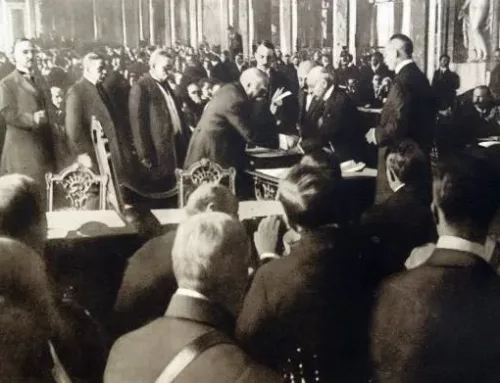Cultural Fusions Behind Europe’s Most Iconic Battles in World War I
Published: 20 January 2023
via the SOFREP web site

american-tank-1918
An American tank attached to the 27th Division escorted by an Australian soldier on horseback arriving at Bellicourt, October 3, 1918. (Courtesy New York State Military Museum via DVIDS)
The First World War massively changed the way we approach and manage conflicts, particularly from one tribe securing and expanding their own territories to forming alliances with other like-minded civilizations to protect and maintain the ideologies and lifestyles they ought to abide by.
It also set a prime example of what warfare would look like if more than two forces were involved in fighting and how drastic it could affect the outcome of waging war. While there are many other examples where a battlefield became a melting pot for different individuals fighting for one objective in mind, we’ll be using World War I (WWI) in examining the cultural fusions that occurred in Europe’s most iconic battles and how they influenced conflict outcomes.
As you all know, WWI broke out because of the assassination of one man, who was not just any man but the heir to the Austria-Hungry throne Archduke Franz Ferdinand and his wife by a Bosnian Serb, Gavrilo Princip. From there, tensions went into overdrive among the powerhouses of Europe in the summer of 1914, which led to the outbreak of the dreaded Great War. Unlike previous warfares, this time, multiple powerful Empires bonded together to pit against each other.
After receiving assurance from Germany that it would render support and alliance, Austria-Hungary sent Serbia a ridiculous ultimatum to force the latter to either surrender or fight. When Serbia didn’t submit to its harsh conditions, the dual monarchy declared war, ultimately severing the peace treaty between Europe’s great powers, and within a week, Russia, Belgium, France, and Great Britain (and its colonized nations) all rallied behind Serbia as the Allied Powers against the Centrals Powers consisted of Austria-Hungary and Germany.
The fighting between these alliances had caused horrendous destruction and massive casualties, and generational traumas, as well as technological inventions and innovations in the defense industry that made it well into the 21st century.
Western Front
The combined strengths of French and British soldiers significantly impacted the outcome in the earliest months of WWI, coupled with Russian forces’ movements in the eastern region that compelled Germany’s invasion in the west to be more challenging than initially anticipated.
The First Battle of Marne (5-12 September 1914) was among the first major, iconic battles fought on the Western Front that almost cost France its northeastern region to the Germans, who successfully penetrated about 30 miles of Paris before pushing them back up to the north of the Aisne River. This would prevent the German Army from further invading the French capital, but it would also mark the official start of the destructive warfare that would soon follow.
Read the entire article on the SOFREP web site.
External Web Site Notice: This page contains information directly presented from an external source. The terms and conditions of this page may not be the same as those of this website. Click here to read the full disclaimer notice for external web sites. Thank you.



